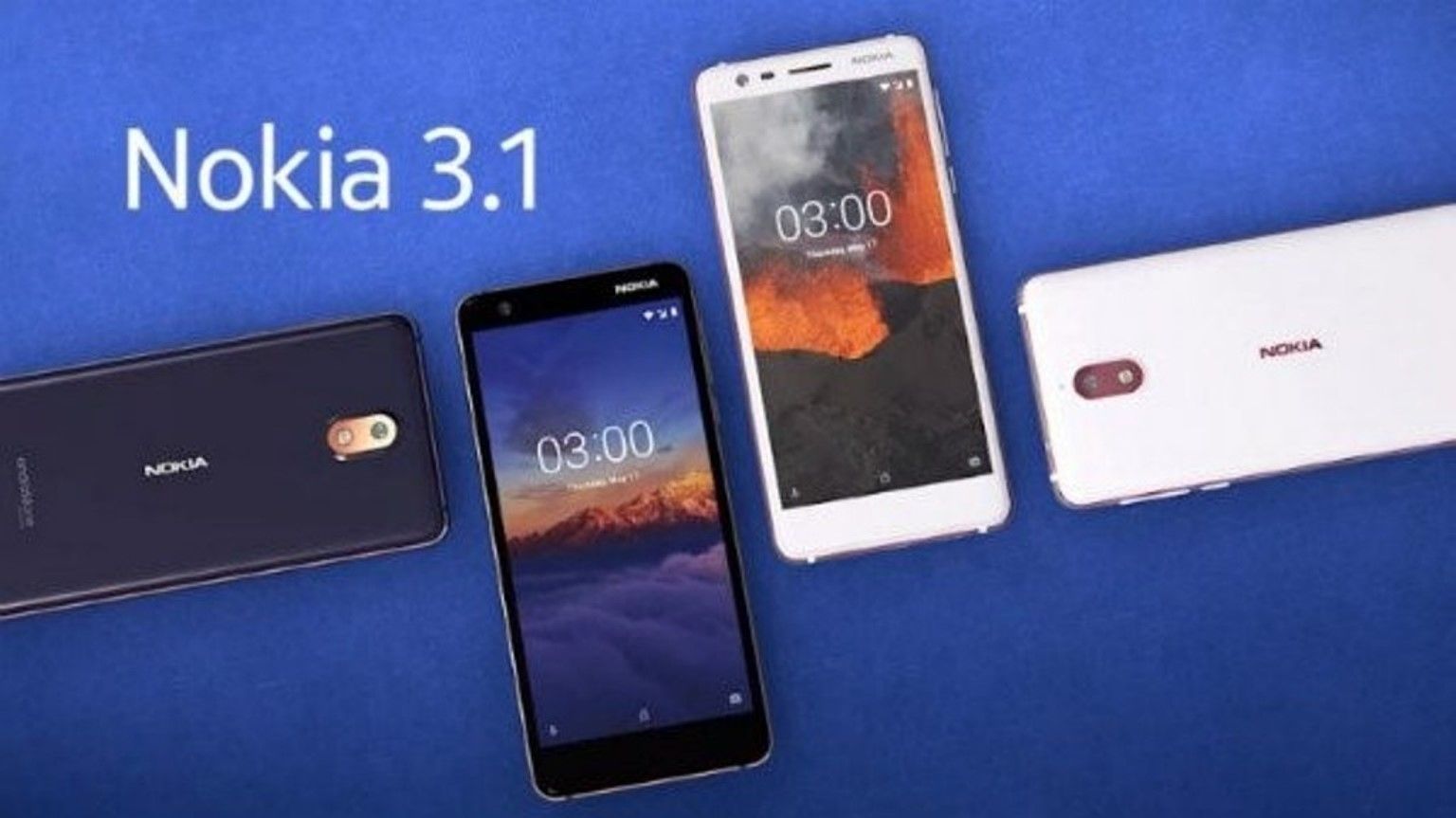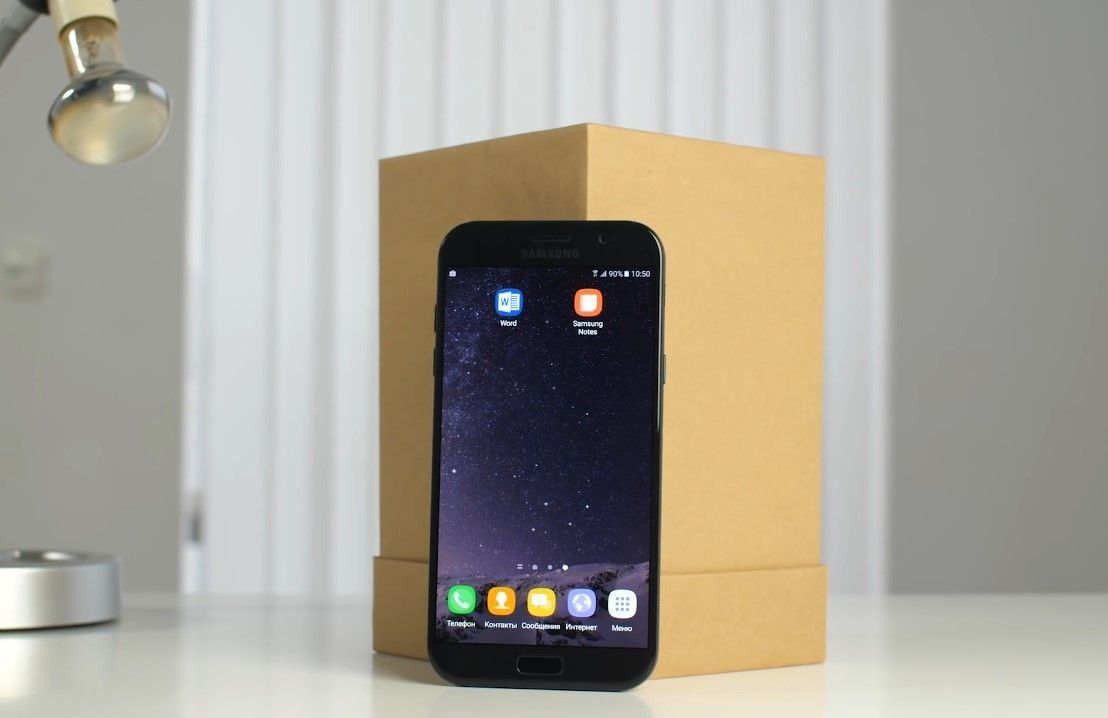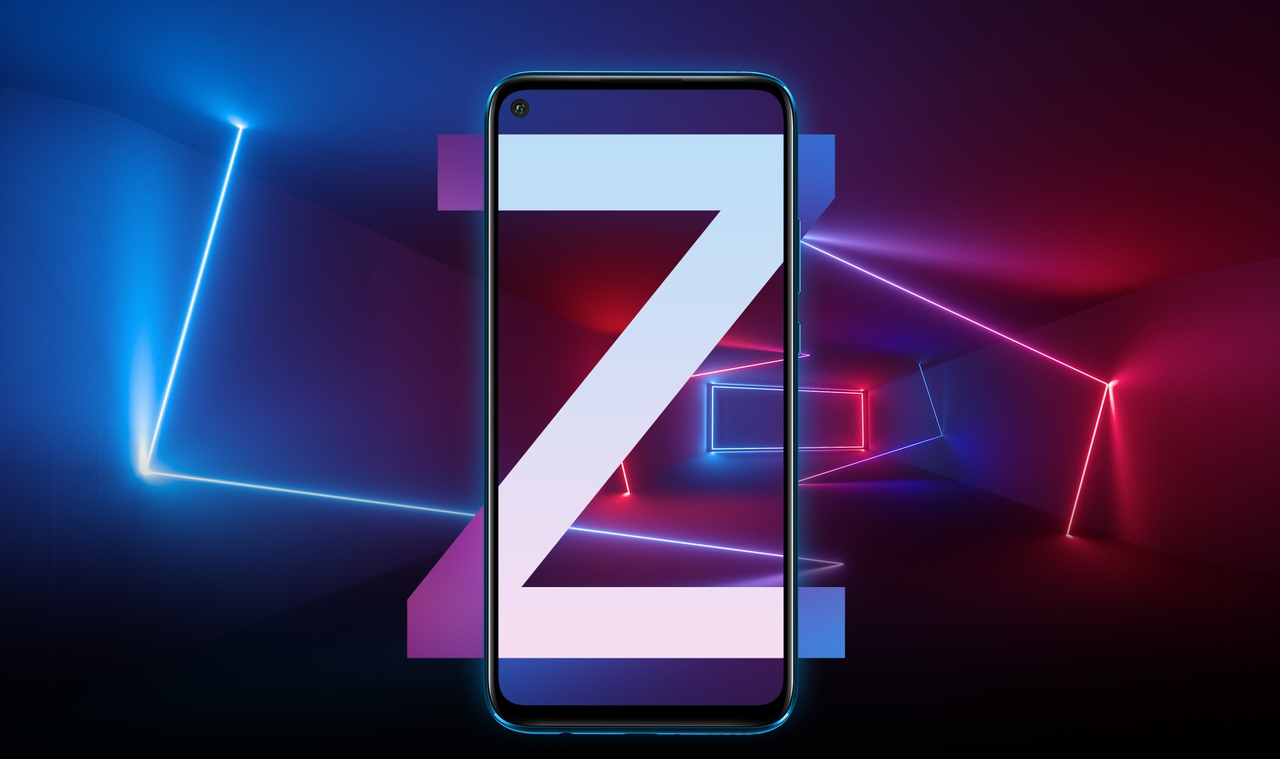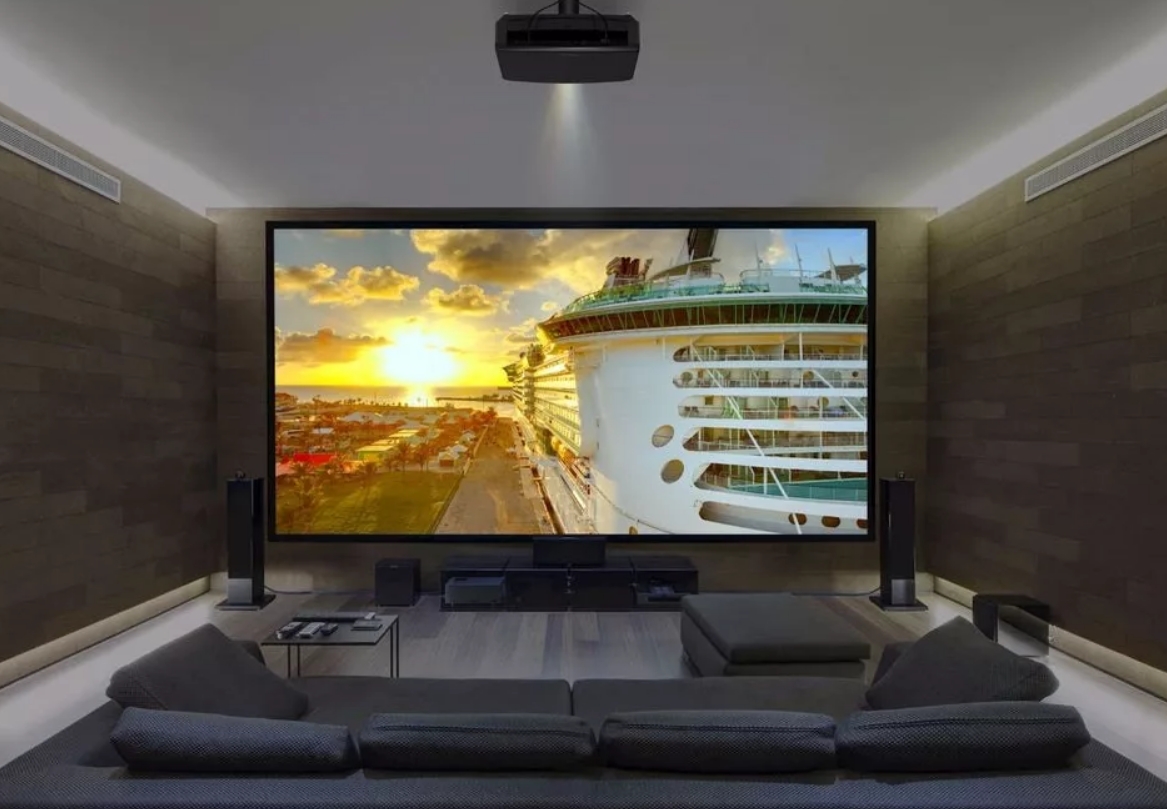Nokia 3.1 Plus smartphone - pros and cons

The end of 2018 promised to be rich in new items, in particular from the company HMD Global, which produces phones under the Nokia brand. It is worth noting that there has been no news about new developments and technologies from the manufacturer for a long time. Once a major electronics supplier, which had a large share in the phone market, after a slump in sales, it disappeared from view.
Many fans of the products of this company, after the announcement of new models made by the company, waited for October, since it was at this time that the start of sales of the three most anticipated smartphones Nokia 2.1, Nokia 3.1 and Nokia 7.1 was scheduled.
The article will analyze the Nokia 3.1 Plus version in more detail.

Specifications
| Net | Technology | GSM / HSPA / LTE |
|---|---|---|
| 2G bands | GSM 850/900/1800/1900 - SIM 1 and SIM 2 | |
| 3G bands | HSDPA 850/900/1900/2100 | |
| 4G bands | LTE | |
| Speed | HSPA 42.2 / 5.76 Mbps, LTE Cat4 150/50 Mbps | |
| GPRS | + | |
| EDGE | + | |
| Housing | Dimensions | 156.9 x 76.4 x 8.2 mm (6.18 x 3.01 x 0.32 in) |
| Weight | 180 g (6.35 oz) | |
| Design | Die-cast aluminum body and glass | |
| SIM | 2 nanoSIM cards | |
| Display | A type | IPS LCD capacitive touchscreen, 16M colors |
| The size | Diagonal 6 inches | |
| Resolution | 720 x 1440 pixels, 18: 9 ratio | |
| Multitouch | + | |
| Platform | OS | Android 8.1 (Oreo); Android One |
| Chipset | Mediatek MT6762 Helio P22 (12 nm) | |
| CPU | Octa-core 2.0 GHz Cortex-A53 | |
| GPU | PowerVR GE8320 | |
| Memory | Memory card slot | microSD, up to 400 GB |
| RAM | 32 GB, 3 RAM or 16 GB, 2 GB RAM | |
| Main camera | Two modules | 1) 13 MP, f / 2.0, AF; |
| 2) 5 MP, f / 2.4, depth sensor. | ||
| Specifications | LED flash, HDR, panorama | |
| Video | 1080p, 30fps | |
| Front-camera | Matrix resolution | 8 MP, f / 2.2 |
| Specifications | LED flash, HDR | |
| Video | 720p, 30fps | |
| Sound | Warnings | Vibration; MP3; WAV ringtones. |
| Speaker | + | |
| 3.5mm headset jack | + | |
| Communication | WLAN | Wi-Fi 802.11 ac / b / g / n, Wi-Fi Direct, hotspot |
| Bluetooth | 4.2, A2DP, LE | |
| GPS | Yes + with A-GPS, GLONASS, BDS, GALILEO | |
| NFC | Yes (APAC and EMEA only) | |
| Radio | FM | |
| USB | microUSB 2.0, USB On-The-Go | |
| Message exchange | SMS (Stream View), MMS, Email, Push Email, IM | |
| Browser | HTML5 | |
| Battery | Non-removable lithium-ion battery | Capacity 3500 mAh |
| Colors | White, blue, marengo |
Design

Designers, having retained the already classic style, were able to create a model of a phone that is pleasant to look and feel. Its edges are smooth, curved, with a diamond-cut aluminum frame. The back surface is matte with a raised Nokia logo and the inscription Android One (the software that powers the smartphone). Below it, you can find information about the developer company and the place of manufacture of the device. A fingerprint sensor is located under the camera.
The screen seems to flow down to the edges, creating a feeling of infinity. Unfortunately, this does not apply to the display. It is limited by a fairly wide framework. The entire front is covered with a protective Corning Gorilla Glass with rounded edges.
There were no fundamental changes in the design. Above the display, the front camera, earpiece and Nokia logo are still placed. The standard buttons go to the screen and are not limited by anything, which makes the desktop seem wider. On the right edge of the device, the first is the volume rocker. It is followed by a power on / off button. On the left side there are two slots: one for microSD and the other for nanoSIM (2 slots). Above is a 3.5mm headphone jack. Below are microUSB, microphone and speaker.
Dimensions 156.9 x 76.4 x 8.2 mm. The weight is 180 grams.
The smartphone is available in three colors: indigo, white and marengo.
Screen

The 6-inch display with HD + resolution and 18: 9 cinematic aspect ratio amazes with superb picture quality. By increasing the contrast, clarity and saturation, it was possible to achieve high picture detail.
The glass, in addition to the additional coating of Corning Gorilla Glass, is protected by an oleophobic compound, thanks to which there are no fingerprints on the screen.
The brightness can be adjusted automatically or manually. At the minimum level of backlighting, the text is very easy to read in the dark, and at the maximum level, the image can be viewed even in bright light. The screen is quite sensitive, thanks to several programs the phone can recognize a large number of simultaneous clicks on the screen (Multitach).
In the phone settings, you can select the image scale and activate the backlight adjustment function by touching the screen 2 times.
Cameras
The rear camera is equipped with two 13 and 5 MP modules and a lens with an aperture (aperture) of f 2.0 (a device that collects or diffuses rays). There is also autofocus and flash (LED). The pixel density per inch is 331 ppi (i.e. 1440x720 pixels). The aspect ratio of the resulting image is 4: 3. The front camera shoots Full HD video at 30 frames per second.
The front camera has 8 megapixels, an f / 2/0 lens and an 84.6-degree field of view. The focus of this model is fixed at a certain distance, which cannot be changed. The video quality of the front camera is lower than that of the front - it shoots in HD resolution at a frequency of 30 frames per second. In the settings, you can choose fast or slow mode. Media files are stored in 3GP media containers.
The interface of the "Camera" application is simple and straightforward. Right from the main screen, you can change the quality of the shooting, activate the flash, go to the settings and change cameras. When shooting “Manual”, you can adjust the white balance, exposure and focus.
To quickly turn on the camera, you need to double-click the lock button. Besides the special icon, you can also release the shutter with the volume button.
Sound
The device has excellent sound quality. By activating a dedicated speaker amplifier, acceptable clarity is maintained at high volumes. At the same time, no extraneous sounds are heard from the speaker itself. This smartphone uses "Play Music" as a standard player. Additional sound settings are not provided. The phone has a built-in radio that works when a wired headset is connected to it, acting as an antenna.
In the device settings, in the "For Developers" section, you can find an option thanks to which some headphones can transmit audio data via Bluetooth.
Performance

All budget smartphones are powered by the MediaTek MT6750 chipset. Nokia 3.1 is no exception. MediaTek MT6750 is a chip with an 8-core processor (2 pieces of four ARM Cortex-A53 cores). The first quartet operates with a clock frequency of up to 1.5 GHz, the second - up to 1 GHz. Graphics processing is the prerogative of the ARM Mali-T860 MP2 dual-block accelerator. Depending on the version of the smartphone (16 or 32 GB), the amount of RAM (RAM) can be equal to two or three GB.
The new processor has significantly improved performance. Despite this, for active games you still have to use the settings at the minimum level. The presence of a full range of sensors and sensors in the smartphone makes it possible to launch applications with augmented reality.
Memory

The memory of the smartphone can be increased by microSD cards up to 128-400 GB. In addition, the capacity can be increased by the device's support for USB-OTG, thanks to which the device can recognize even flash drives connected to it.
Communication
She, in comparison with its previous model Nokia 3, has not undergone any special changes. Modules for subscriber identification of the nanoSIM format operate in Dual SIM Dual Standby mode (this technology allows both cards to be waiting for a call). Wireless communication is represented by a 4G LTE modem network with speeds up to 150 Mbps (there is also support for LTE-FDD frequency ranges), as well as a Bluetooth 4.2 and Wi-Fi application.
The device also has an NFC (Near field communication - "near field communication" interface for wireless data transmission at a distance of up to 10 meters), with which you can pay by the contactless payment system Google Pay. This technology also links Bluetooth-connected devices, making it easier to exchange information.
Location and navigation are powered by GPS and GLONASS (Global Navigation Satellite System, domestically developed). There is also A-GPS technology (accelerates the search for satellites, due to which the waiting time for the result is reduced, and the accuracy of positioning increases).
Autonomy

This is the ability of the device to work without recharging until the battery is completely empty. The longer this period, the more autonomous the phone is.
The capacity of the battery, compared to its previous version, has increased and is 3500 mAh, which is approximately equal to two days of active work of the smartphone. All this thanks to an 8-core processor that evenly distributes the workload when you need to increase performance. This saves battery power and allows you to focus on your current business without being distracted by checking your battery.
The power consumption efficiency of Nokia 3.1 is high - clips in MP4 format and HD quality can be played at maximum backlight for more than 6 hours.
The option "Power saving in standby mode" is enabled in the settings (section "Battery"). Also, there you can prohibit or activate the inclusion of energy conservation when the battery is low.
Software features

The software is represented by the operating system Android One (version Oreо), the relevance of which is supported by regular updates every two years. Security is updated every two months for three years.
The appearance of the Android interface is the same for all models, but for Nokia 3.1 it can be changed using the System UI Tuner. This is a tab that allows you to change the "appearance" of the program. It can be turned on by lowering the shutter with quick access to applications and pressing and holding the settings icon (gear).
Equipment
It does not differ from the sets of many other phones. The package includes the Nokia 3.1 Plus smartphone itself, a Nokia MicroUSB charger, a quick user guide, a key (special pin) for opening the SIM card slot and a headset.
Outcome
- Nice and laconic design with graceful lines and curves. High-quality materials were used in the manufacture, and this is clear even upon a cursory examination. The device is pleasant to the touch: the body made of cast metal with a velvety surface is very comfortable in the hand.
- The diagonal of the Nokia 3.1 Plus is larger than that of its predecessor. This ensures good ergonomics. The display has also increased in size and the image quality has also improved.
- Changes have also taken place in the processor, which affected the operation of the device.
- The indisputable advantages of this device can also be attributed to the NFC interface, which is necessary for making contactless payments Google Pay, a Wi-Fi module with two connection lanes, slots for nanoSIM cards and microSD, highlighted on the side edge, operational Android updates that HMD promises Global.
- Photographs well even in the sun.
- The matte surface is good for picking up prints. This is especially evident on dark colored models.
- High price for a smartphone that considers itself a budget option.
Customer Reviews
In general, consumers were satisfied with this smartphone. It may not be quite capable of playing active games, but for long-term video viewing or long-term shooting, it will do well. Many users note that the device is very convenient and smart enough.
At the same time, there are many comments that talk about the poor functioning of some programs and applications, like NFC or SIM cards. Manufacturers claim that this may be due to a factory reset.
Where is it profitable to buy?
The smartphone positions itself as a budget device, which has a good ratio of functionality and price. However, on the official site of Nokia, this model is quite expensive - 12,990 rubles.On other pages you can find cheaper options - 9-10 thousand rubles each.
new entries
Categories
Useful
Popular articles
-

Top rating of the best and inexpensive scooters up to 50 cubic meters in 2024
Views: 97661 -

Rating of the best materials for noise insulation for an apartment in 2024
Views: 95022 -

Rating of cheap analogues of expensive medicines for flu and colds for 2024
Views: 91751 -

The best men's running shoes in 2024
Views: 87681 -

Top ranking of the best smartwatches 2024 - price-quality
Views: 85091 -

Best Complex Vitamins in 2024
Views: 84801 -

The best dye for gray hair - 2024 top ranking
Views: 82406 -

Rating of the best wood paints for interior use in 2024
Views: 77202 -

Ranking of the best action cameras from China in 2024
Views: 75269 -

Rating of the best spinning reels in 2024
Views: 74827 -

The most effective calcium supplements for adults and children in 2024
Views: 72463 -

Top rating of the best means for male potency in 2024 with a description
Views: 68296









